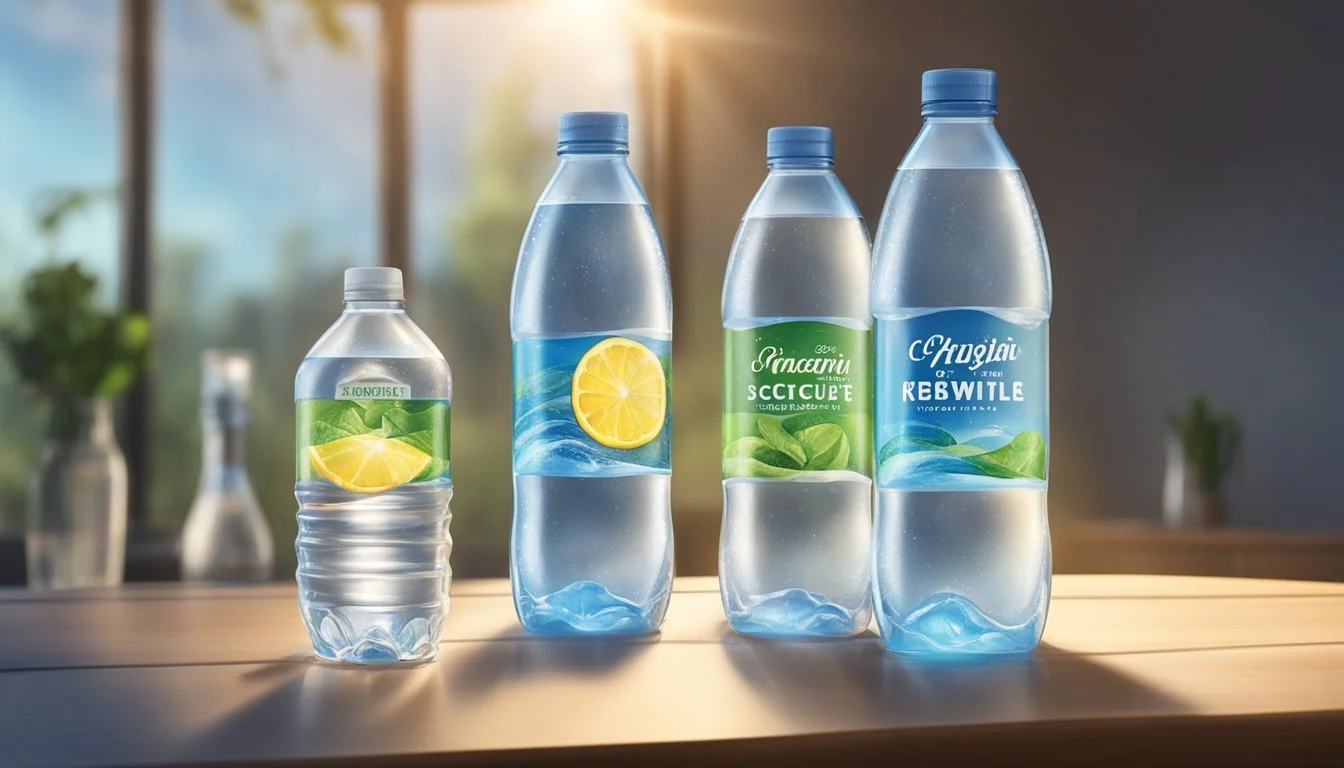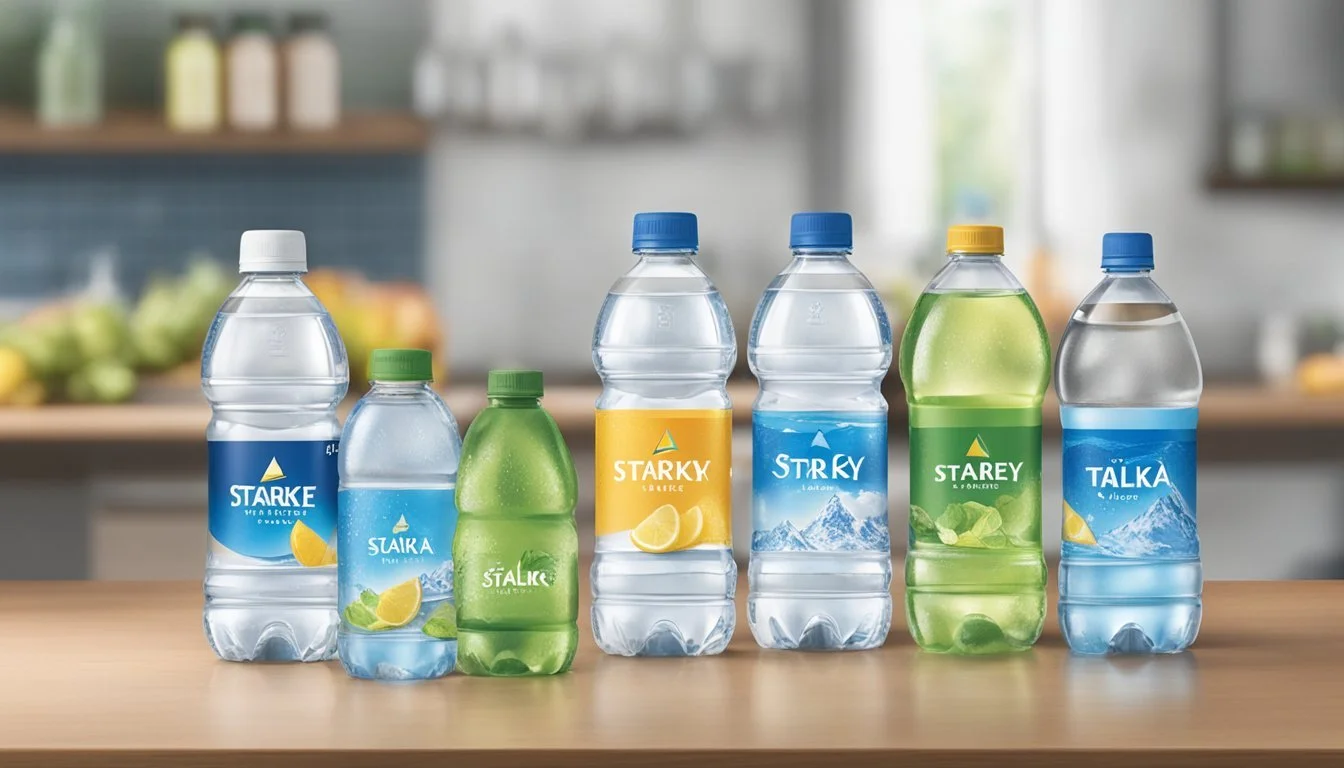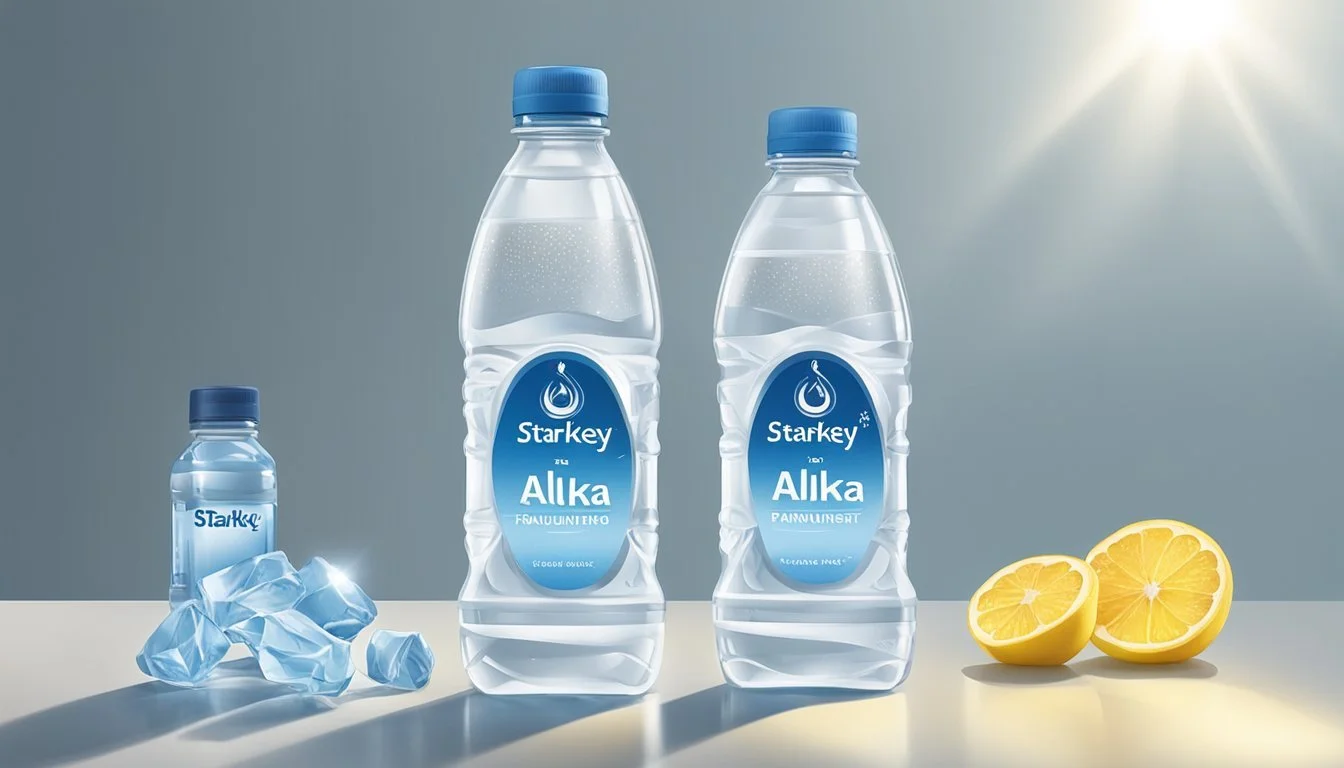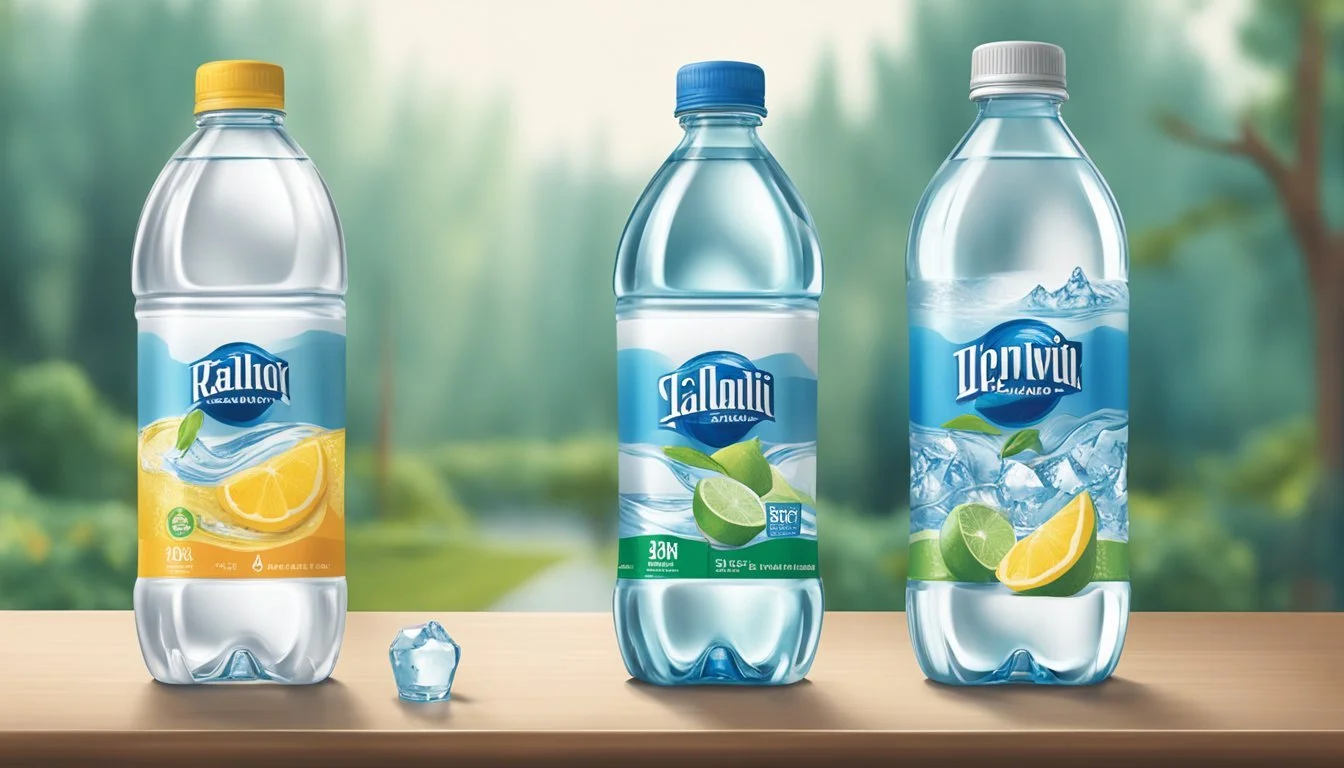Starkey vs. Tru Alka
Comparing Bottled Water Brands
Choosing the right bottled water can be a daunting task with the numerous options available. Starkey and Tru Alka are two popular brands, each offering distinct qualities. Starkey positions itself as a premium, single-source spring water with a balanced pH, direct from its Idaho springs, touted for its purity and taste.
Tru Alka, on the other hand, focuses on its high alkaline nature, with a pH level between 9 and 10, making it a favorite among those looking to neutralize body acidity. For those prioritizing alkalinity and added minerals, Tru Alka may be the preferable choice. Starkey, however, might appeal more to consumers seeking natural spring water with a balanced profile.
Each brand caters to different needs and preferences, whether it's Starkey’s pure spring water quality or Tru Alka’s alkaline benefits. With these differences in mind, diving into the specifics of each can help determine which is better suited for your hydration goals.
Understanding Bottled Water
Bottled water comes in various types, each with distinct characteristics and benefits. It is crucial to understand the differences and the safety regulations that govern their production and distribution.
Types of Bottled Water
Spring Water: This type of water is sourced from natural springs. It typically retains natural minerals, giving it a distinct taste. Popular examples include brands like Acqua Panna.
Purified Water: This water undergoes multiple filtration processes, such as reverse osmosis or distillation, to remove impurities and contaminants. Brands like Aquafina are known for their rigorous purification methods.
Mineral Water: Naturally contains minerals like calcium and magnesium. Often sourced from mineral springs, it is appreciated for its potential health benefits and specific taste profile.
Alkaline Water: Characterized by a higher pH level, usually between 8 and 10, which can help neutralize acidity in the body. Tru Alka is a notable brand in this category, often touted for its hydration benefits.
Distilled Water: Created by boiling water and condensing the steam back into liquid. This process removes most impurities and minerals. It is often used in laboratories and not commonly consumed as regular drinking water.
Regulations and Safety Standards
The FDA regulates bottled water in the United States, ensuring safety and quality similar to municipal tap water standards.
Labeling Requirements: Bottled water labels must clearly state the source and type of water. Brands must also indicate if minerals have been added.
Contaminant Limits: The FDA sets limits on contaminants like lead and arsenic. Bottled water must comply with these limits to be considered safe for consumption.
BPA Concerns: Bottles made from PET plastic, commonly used by brands like Arrowhead, are frequently scrutinized for the presence of Bisphenol A (BPA). Many manufacturers are moving towards BPA-free options to alleviate health concerns.
International Standards: Imported bottled water must meet both the FDA's standards and the regulations of its country of origin.
Ensuring the water you consume is both safe and of a preferred type can enhance your hydration experience, whether you select spring, purified, or alkaline varieties.
The Brands in Focus
Starkey and Tru Alka offer distinct features that cater to various hydration needs and preferences. Exploring these brands can help consumers make well-informed choices.
Overview of Starkey Water
Starkey Water is sourced from a geothermal spring in Idaho, known for its purity. The water is naturally alkaline, with a pH of around 9.6. This high alkalinity may appeal to those seeking water with fewer acidic properties.
Starkey emphasizes its source's uniqueness and long journey through underground layers, which they claim adds minerals and gives the water a smooth taste. The brand markets its water as having health benefits due to its natural mineral content.
Packaged in both glass and plastic, Starkey aims to provide options for various consumer preferences. The glass bottles are often highlighted for their environmental benefits and potential to preserve the water's taste.
Overview of Tru Alka
Tru Alka positions itself as a premium alkaline water brand with a strong emphasis on balance and hydration. The water undergoes a multi-step filtration process, including reverse osmosis and ionization, to ensure it is free from contaminants while retaining beneficial minerals.
Tru Alka's pH level is consistently around 8.5, making it less alkaline than Starkey but still well within the range that many consumers seek. The brand prides itself on consistency and quality control in its bottling process.
Tru Alka is available in various packaging options, catering to portability and convenience. The brand targets health enthusiasts and those looking for a reliable source of hydration with balanced pH levels.
Water Source and Purification
The origin and purification methods of bottled water are crucial factors that influence its taste and quality. Identifying the source of the water and understanding the purification process can provide valuable insights to consumers.
Sourcing: Spring vs. Reverse Osmosis
Starkey Water is sourced from natural springs in Idaho. These springs are known for their high-mineral content, which contributes to the distinct taste of Starkey Water. This spring water originates naturally and is collected with minimal processing, retaining its original mineral composition.
Tru Alka, on the other hand, primarily uses water sourced through municipal systems and then treats it using reverse osmosis. This process removes impurities and most minerals from the water. The water is then re-mineralized to achieve the desired alkaline pH level. The reverse osmosis method ensures a high level of purity, but the added minerals are synthetic.
The Purification Process
Starkey Water undergoes a relatively simple purification process, as it is naturally sourced from springs. The water is filtered to remove any particulates and contaminants but retains its natural mineral content. This minimal processing aims to preserve the natural characteristics and purity of the water.
Tru Alka employs a more complex purification process involving reverse osmosis. This technique forces water through a semi-permeable membrane to remove contaminants and dissolved solids, resulting in extremely pure water. To achieve alkalinity, essential minerals are reintroduced. This ensures the water has a balanced pH but results in water that has been highly processed.
The purification differences highlight Starkey's focus on natural purity and Tru Alka's approach to controlling water composition.
Content Analysis
Starkey and Tru Alka bottled waters offer distinct benefits. This analysis focuses on mineral content, electrolyte balance, and pH levels, providing a detailed comparison of the two brands.
Mineral Content
Starkey water is sourced from a deep geothermal spring, which naturally imbues it with minerals like silica, calcium, and bicarbonate. These minerals contribute to its slightly sweet and smooth taste. Starkey's unique mineral profile aims to cater to those seeking a naturally sourced, mineral-rich option.
Tru Alka, in contrast, adds minerals such as magnesium, calcium, and potassium post-filtration to enhance its health benefits. Unlike Starkey, Tru Alka positions itself as a functional water, targeting consumers looking for added health benefits from their bottled water.
Electrolyte Balance
Electrolytes, essential for hydration and bodily functions, vary between the two brands. Starkey water naturally contains some electrolytes but does not specifically market this feature. Its primary selling point remains its natural mineral composition, rather than a specific focus on electrolytes.
Tru Alka, however, is fortified with additional electrolytes. This is an intentional enhancement aimed at optimizing hydration and improving athletic performance. Tru Alka's marketing focuses on electrolyte content to attract consumers interested in fitness and active lifestyles.
pH Levels and Alkalinity
Starkey water has a relatively neutral pH level around 8. This mild alkalinity provides a balanced experience without major health claims related to pH levels. Its focus is more on the natural sourcing and mineral content.
Tru Alka boasts a higher pH level, typically ranging from 9 to 10. This higher alkalinity is believed to help neutralize acidity in the body, potentially offering health benefits such as improved metabolism and digestion. Consumers looking for alkaline water often choose Tru Alka for its specific claims related to alkalinity.
Health and Taste
Choosing between Starkey and Tru Alka bottled water involves considering both the health benefits of hydration and the taste profile of each brand. Starkey offers mineral-rich water from geothermal springs, while Tru Alka emphasizes purified, alkaline water with health-centric packaging.
Health Benefits of Hydration
Hydration is essential for maintaining optimal health. Starkey Water, sourced from geothermal springs, contains beneficial minerals like calcium, magnesium, and silica, which support bone health and overall wellness. Tru Alka, on the other hand, focuses on providing alkaline water, which some believe helps to balance body pH levels and support metabolic functions.
Starkey's mineral content potentially provides an added bonus for those looking to increase their intake of essential nutrients through their drinking water. In contrast, Tru Alka's alkaline properties are marketed to those seeking to counteract acidity in their diet. Both brands aim to offer more than just hydration, contributing to broader health goals through their unique compositions.
Taste Profile Comparison
The taste of bottled water is often subjective. Starkey Water, known for its clean and refreshing taste, benefits from its natural spring origins, providing a subtle mineral flavor that some find appealing. The presence of minerals like calcium and magnesium adds a slight, yet noticeable, taste difference.
Tru Alka's water is engineered to be crisp and clean, with an emphasis on a pH level above 7, which results in a smoother, less tangy finish. This alkaline profile makes it a preferred choice for those who dislike the slight tanginess that some mineral waters possess. Both options offer distinct taste experiences, catering to different preferences.
Starkey's flavor is often described as more natural and rich, owing to its mineral content. Tru Alka's taste is favored for its neutrality and smoothness, making it an excellent choice for regular consumption without a pronounced aftertaste.
Environmental and Ethical Considerations
When choosing between Starkey and Tru Alka, key elements include packaging materials, sustainability, and the broader environmental impact of each brand. Let's explore these aspects in more detail.
Packaging and Sustainability
Starkey predominantly packages its water in plastic bottles, which can raise concerns regarding recyclability and environmental footprint. Some of their products, however, come in glass bottles, which are more environmentally friendly because glass is highly recyclable and does not leach chemicals.
Tru Alka favors glass bottles for most of their product lines. This choice underscores their commitment to sustainability, as glass is inert and does not degrade over time, contributing less to plastic pollution. They also explore boxed water options, which are gaining popularity for being more sustainable than traditional plastic bottles.
Comparison:
Starkey: Mostly plastic, some glass bottles
Tru Alka: Primarily glass bottles, some boxed water options
Environmental Impact of Water Brands
Starkey uses domestic sources, which could imply a lower carbon footprint due to reduced transportation needs. However, consistent concerns regarding chemical traces found in Starkey's water could pose environmental risks during production and after disposal.
Tru Alka also sources its water domestically, focusing on minimizing carbon emissions associated with long-distance transportation. Their use of glass and boxed water options signals a broader commitment to reducing environmental impact. Additionally, their practices in sourcing and packaging set a precedent for what sustainable bottled water can look like.
Key Points:
Starkey: Domestic sourcing, possible chemical traces
Tru Alka: Domestic sourcing, innovative packaging options
By comparing packaging, sustainability, and environmental impact, consumers can make more informed decisions about which brand aligns with their environmental and ethical values.
Consumer Experience
Consumer feedback on Starkey and Tru Alka highlights differences in availability, accessibility, price, and value. These factors significantly impact the buying decision and overall consumer satisfaction.
Availability and Accessibility
Starkey and Tru Alka are both available in major grocery stores, which makes them readily accessible for most consumers. Starkey is often found in health food stores and grocers that focus on natural and organic products. Tru Alka, being marketed as a premium alkaline water, is also widely available in stores, especially those with a focus on premium and health-oriented products. Both brands are also available for purchase online through platforms such as Amazon, making them accessible to a broader audience.
Price and Value Comparison
Starkey is generally priced slightly lower than Tru Alka, making it a more budget-friendly option for those looking for clean and crisp water. Tru Alka, on the other hand, justifies its higher price with added electrolytes and an alkaline pH level. These features are attractive to consumers seeking specific health benefits. The value of each brand depends on what the consumer prioritizes, whether it be affordability or added health benefits. While Starkey offers excellent value for money due to its refreshing and pure taste, Tru Alka's enhanced composition may be worth the premium for some consumers.
More About Starkey
Icelandic Glacial vs Starkey: Which Bottled Water is Better?
Mountain Valley Spring Water vs Starkey: Which Bottled Water is Better?
Starkey vs Kirkland Signature: Which Bottled Water is Better?
Starkey vs Richard's Rainwater: Which Bottled Water is Better?
Starkey vs Whole Foods Italian Still Mineral water: Which Bottled Water is Better?





